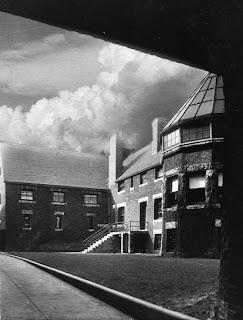On Wednesday June 1, 2011 , the museum will launch an 18-month celebration commemorating the building of Glessner House. A full evening of events is scheduled beginning at . A summary of the festivities is found below.
– Reception in the coach house
– Welcome and recreation of the Glessners’ groundbreaking ceremony (which took place June 1, 18 86
– Presentation of the new reprint of John Glessner’s 1923 The Story of a House, funded by the Graham Foundation for Advanced Studies in the Fine Arts. This reprint includes the full text and contains over 60 historic images. Copies will be available for purchase at the event and the original leather-bound copy presented to the Glessners’ daughter Frances Glessner Lee in 1923 will be on display.
– Unveiling of the new permanent exhibit on Henry Hobson Richardson, written by Richardson Richardson Chicago
– Viewing of the temporary exhibit “The Story of a House” showcasing selected books on architecture and design from the library of John and Frances Glessner. This exhibit is part of the city-wide celebration “Festival of the Architecture Book, 1511-2011.” Visit http://www.1511-2011.org/ for further information on events throughout the city.
– Presentation by Bill Tyre, Executive Director and Curator of Glessner House Museum Chicago Prairie Avenue home.
For more information on the June 1 anniversary celebration, visit http://www.glessnerhouse.org/Events.htm or call 312-326-1480 . The cost of the event is $15 per person, $10 for museum members. Advanced reservations are suggested.










